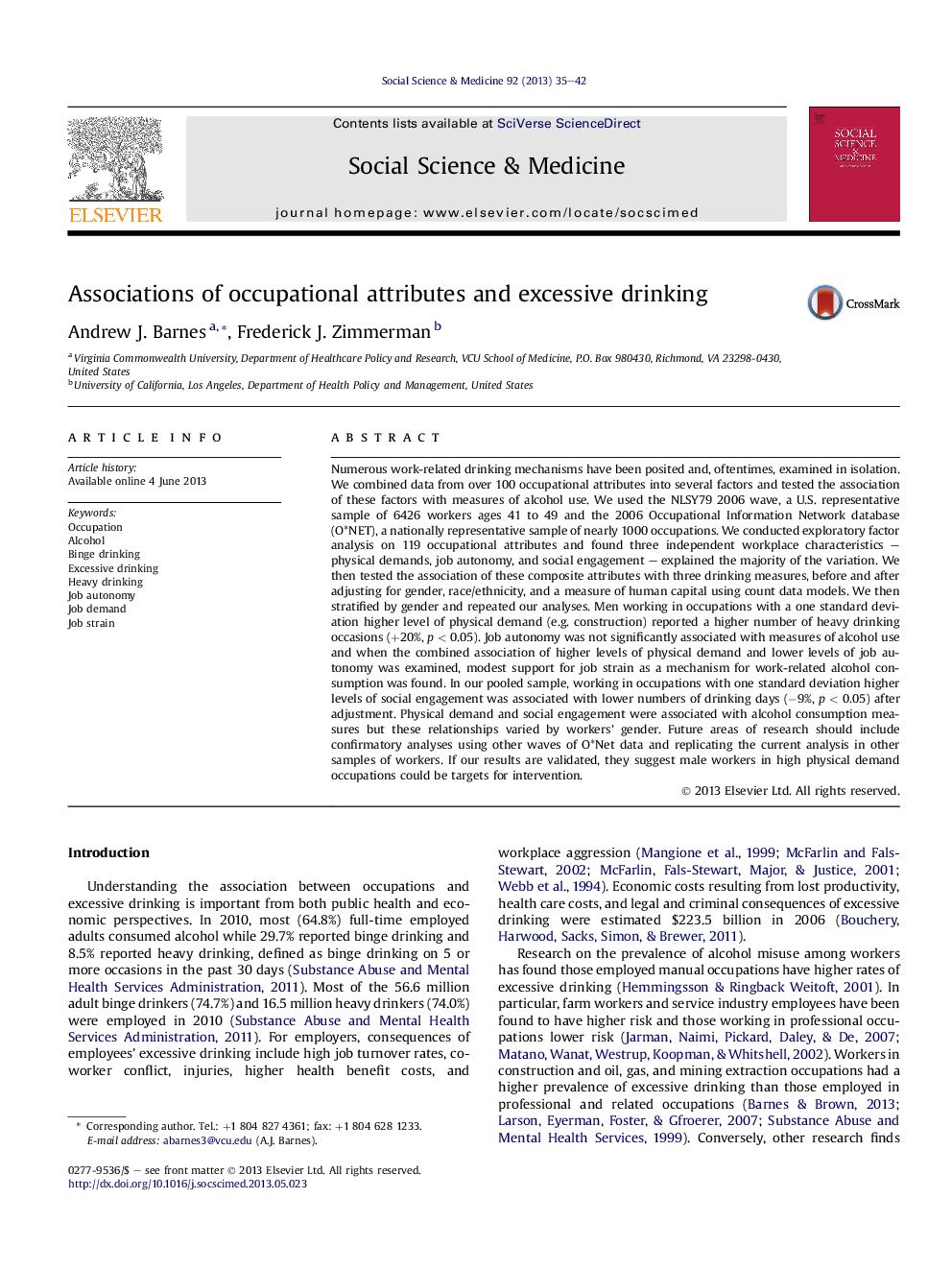| کد مقاله | کد نشریه | سال انتشار | مقاله انگلیسی | نسخه تمام متن |
|---|---|---|---|---|
| 7336971 | 1476076 | 2013 | 8 صفحه PDF | دانلود رایگان |
عنوان انگلیسی مقاله ISI
Associations of occupational attributes and excessive drinking
ترجمه فارسی عنوان
انجمن ها از ویژگی های شغلی و نوشیدن بیش از حد
دانلود مقاله + سفارش ترجمه
دانلود مقاله ISI انگلیسی
رایگان برای ایرانیان
کلمات کلیدی
اشتغال، الکل، زیاده روی در نوشیدن، نوشیدن بیش از حد، نوشیدن زیاد، خودمختاری کار، تقاضای کار، فشار کاری،
موضوعات مرتبط
علوم پزشکی و سلامت
پزشکی و دندانپزشکی
سیاست های بهداشت و سلامت عمومی
چکیده انگلیسی
Numerous work-related drinking mechanisms have been posited and, oftentimes, examined in isolation. We combined data from over 100 occupational attributes into several factors and tested the association of these factors with measures of alcohol use. We used the NLSY79 2006 wave, a U.S. representative sample of 6426 workers ages 41 to 49 and the 2006 Occupational Information Network database (O*NET), a nationally representative sample of nearly 1000 occupations. We conducted exploratory factor analysis on 119 occupational attributes and found three independent workplace characteristics - physical demands, job autonomy, and social engagement - explained the majority of the variation. We then tested the association of these composite attributes with three drinking measures, before and after adjusting for gender, race/ethnicity, and a measure of human capital using count data models. We then stratified by gender and repeated our analyses. Men working in occupations with a one standard deviation higher level of physical demand (e.g. construction) reported a higher number of heavy drinking occasions (+20%, p < 0.05). Job autonomy was not significantly associated with measures of alcohol use and when the combined association of higher levels of physical demand and lower levels of job autonomy was examined, modest support for job strain as a mechanism for work-related alcohol consumption was found. In our pooled sample, working in occupations with one standard deviation higher levels of social engagement was associated with lower numbers of drinking days (â9%, p < 0.05) after adjustment. Physical demand and social engagement were associated with alcohol consumption measures but these relationships varied by workers' gender. Future areas of research should include confirmatory analyses using other waves of O*Net data and replicating the current analysis in other samples of workers. If our results are validated, they suggest male workers in high physical demand occupations could be targets for intervention.
ناشر
Database: Elsevier - ScienceDirect (ساینس دایرکت)
Journal: Social Science & Medicine - Volume 92, September 2013, Pages 35-42
Journal: Social Science & Medicine - Volume 92, September 2013, Pages 35-42
نویسندگان
Andrew J. Barnes, Frederick J. Zimmerman,
